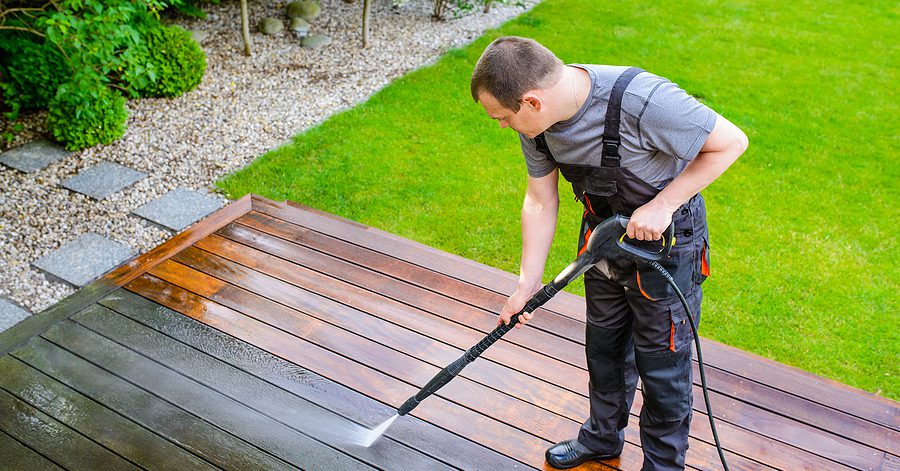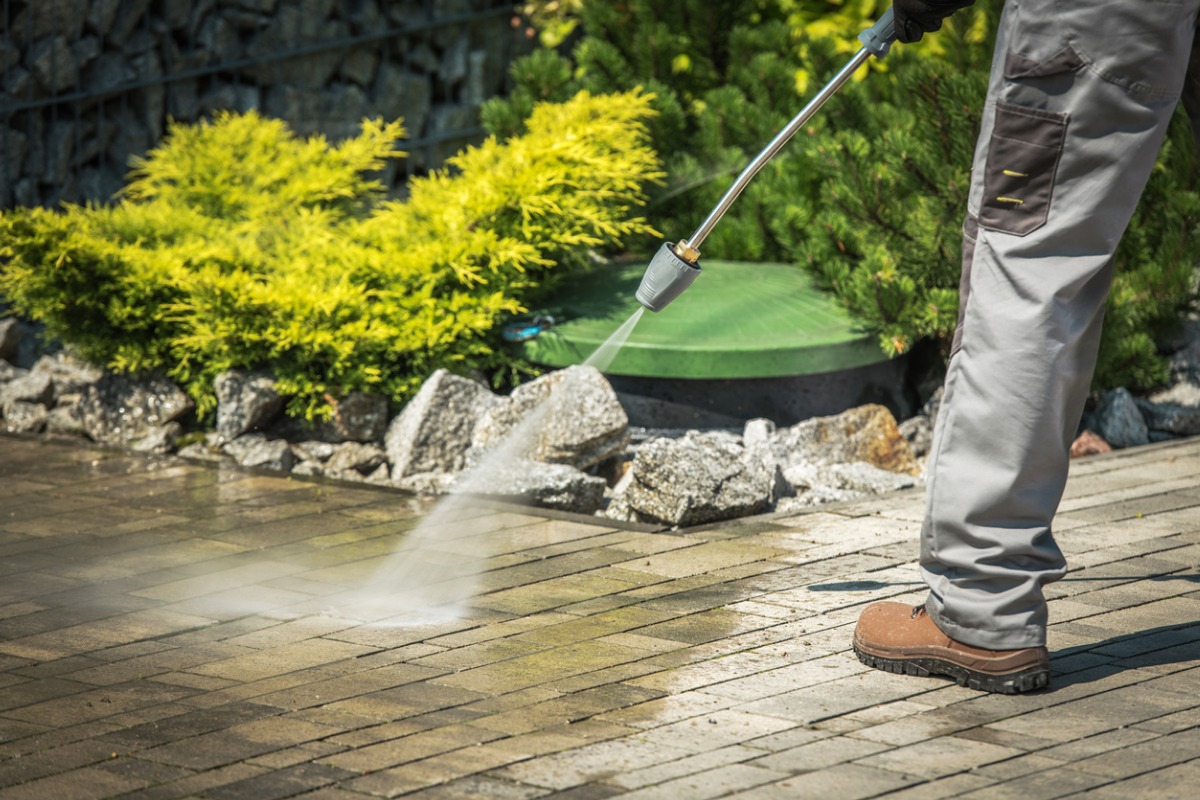Find Professional Services for Your Home or Service with Pressure Washing Lockhart Teams
Find Professional Services for Your Home or Service with Pressure Washing Lockhart Teams
Blog Article
Revitalize Your Home: The Ultimate Overview to Stress Washing
Pressure washing is a vital device for house owners intending to bring back the aesthetic appeal and longevity of their homes. Comprehending the nuances of pressure ratings, equipment selection, and effective cleansing methods can substantially raise the exterior of your home. The process is not without its challenges; incorrect techniques can lead to damages instead than renewal. To browse these intricacies and accomplish optimum outcomes, it is necessary to explore the fundamental aspects of pressure cleaning, including practical recommendations on making sure and addressing usual spots safety throughout the process. What adheres to may transform your strategy to home maintenance.
Comprehending Stress Laundering
Stress cleaning is an effective cleansing technique that utilizes high-pressure water spray to get rid of dust, crud, mold, and other pollutants from different surface areas. This method is especially efficient on difficult surfaces like driveways, walkways, decks, and house siding, where typical cleansing approaches might drop brief. By utilizing specific devices that produces high-pressure streams of water, stress washing can permeate deeply into surfaces, effectively dislodging and removing persistent particles.
The procedure is not only efficient but likewise ecologically friendly, as it typically depends entirely on water, decreasing the need for severe chemical cleansers. In addition, stress washing can enhance the aesthetic allure of residential properties, preserving their value and prolonging the lifespan of surface areas by preventing damage brought on by impurities.

Choosing the Right Devices
Picking the proper tools is vital for achieving ideal lead to pressure washing. The initial decision includes picking between electric and gas stress washers. Electric models are normally lighter, quieter, and ideal for domestic tasks like cleansing patios or cars. Gas units, on the other hand, use greater stress and flow rates, making them suitable for bigger jobs such as cleaning up driveways or house siding.
Following, take into consideration the pressure rating, determined in extra pounds per square inch (PSI) For light-duty jobs, a stress washer with 1,300 to 1,600 PSI is adequate, while medium-duty work usually need 1,600 to 2,500 PSI. Sturdy jobs may require makers surpassing 2,500 PSI.
Furthermore, the circulation price, determined in gallons per min (GPM), affects cleansing effectiveness (Pressure Washing Lockhart). A greater GPM enables quicker cleansing yet might need extra powerful equipment
Methods for Efficient Cleaning Up

The strategy of overlapping strokes is important for also coverage. Begin from the leading and work your means down, making sure that each pass slightly overlaps the previous one. This avoids spotting and ensures a detailed clean. In addition, maintaining a constant distance from the surface area, commonly 12 to 18 inches, allows for effective application without triggering harm.
Using the right nozzle is likewise crucial. A wide-angle nozzle is ideal for larger areas, while a narrow nozzle can target stubborn dirt or grime. Furthermore, utilizing a sweeping movement instead than a fixed spray More Bonuses assists to prevent concentrated locations of pressure, which might cause surface area damage.

Tackling Common Discolorations
When it involves keeping the look of outdoor surface areas, resolving usual discolorations properly is critical for lengthening their life expectancy and improving visual appeal. Various surface areas, including concrete, plastic, and timber, can build up stains from organic products, oils, and toxic wastes, demanding a targeted strategy.
For oil discolorations, a mix of degreasers and pressure washing can yield outstanding results. Apply the degreaser to the tarnished location, enabling it to penetrate before using a pressure washer to get rid of the residue. Organic spots, such as mildew or algae, typically require an option consisting of bleach or a devoted mold and mildew cleaner, followed by stress washing to recover the surface's initial appearance.
Rust discolorations, usually found on steel surfaces, might require customized rust eliminators. Apply the item and scrub the area before stress washing to remove any type of sticking around discoloration. It is necessary to check any kind of cleaning remedy on a small, low-profile area first to avoid damage.
Safety And Security Tips and Best Practices
Making sure safety and security while pressure cleaning is extremely important, as the high-pressure water can position significant threats otherwise dealt with appropriately. To shield yourself and others, constantly use ideal personal protective tools (PPE), consisting of security goggles, handwear covers, and sturdy footwear. This equipment will protect you from flying debris and the possibility for injury.
Before starting, evaluate the pressure washing machine for any leakages or damaged parts. Acquaint yourself with the devices's guidebook to recognize its operation and safety functions. In addition, make certain the area you are operating in is free of obstacles and that any type of electric links are secure from water exposure.
When operating the pressure washer, preserve a risk-free range from surface areas and prevent intending the nozzle at individuals, family pets, or breakable things. Make use of the proper nozzle for the job, as various nozzles create varying spray patterns and pressure levels. Be mindful of your surroundings: secure loosened products, watch for electrical lines, and stay clear of functioning in wet problems that might lead Visit This Link to slips or falls.
Conclusion
Finally, stress washing works as an important tool for homeowners looking for to boost residential or commercial property looks and durability. By understanding the details of devices selection, effective cleansing techniques, and usual discolor removal, Full Report the possibility for rejuvenating one's home becomes noticeable. Furthermore, adherence to safety methods guarantees a secure and reliable cleaning procedure. Eventually, the knowledge gotten from this guide equips home owners with the needed skills to keep and raise their residential or commercial property's allure and value effectively.
Stress washing is an effective cleansing method that uses high-pressure water spray to get rid of dust, grime, mold, and various other impurities from various surfaces. By utilizing customized tools that generates high-pressure streams of water, pressure cleaning can pass through deeply into surfaces, efficiently removing and cleaning away persistent particles.
Nonetheless, it is important to comprehend that pressure washing needs a particular degree of ability and expertise to avoid damaging surfaces. Softer materials like timber or repainted surfaces necessitate a lower pressure setting to avoid damages, whereas concrete or block surfaces can stand up to higher stress degrees.
Organic discolorations, such as mold or algae, usually call for a solution including bleach or a specialized mold and mildew eliminator, adhered to by stress cleaning to restore the surface area's original look. - Pressure Washing Lockhart
Report this page